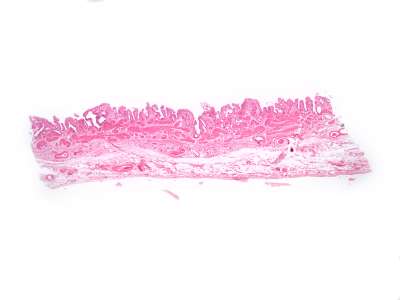Course 5 - Epithelial cells
In this course, we will primarily focus on epithelial tissue, but since the tissue samples come from the gallbladder, trachea, and esophagus, we will also include some information about these structures.
Epithelial tissue covers the body surfaces and internal cavities. This tissue type is also the origin of glandular cells (both endocrine and exocrine, see course 3) and is specialized in various organs to perform a range of functions such as protection, absorption, secretion, and excretion.
Epithelium is classified based on the number of cell layers:
- simple
- stratified
And based on the shape of the cells:
- squamous epithelium
- cuboidal epithelium
- columnar epithelium
On the surface, epithelial cells may have two different "special structures":
- Microvilli are finger-like projections that increase the surface area, thereby enhancing the exchange of substances across the membrane (e.g., in the intestine where nutrients are absorbed).
- Cilia are hair-like, movable structures that help transport extracellular material across the surface of the epithelium (e.g., in the upper respiratory tract, where mucus and waste products are transported upwards towards the throat).




